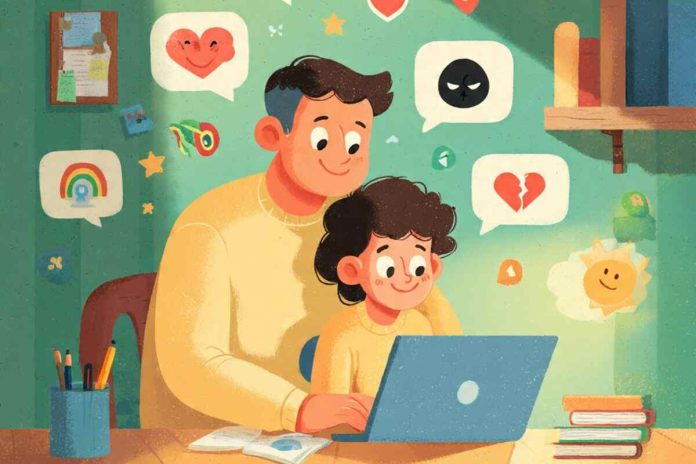The internet has become an inseparable part of our daily lives . From online learning to social media most systems we use today are fully digitized and processed by computers. While this digital shift has created immense opportunities it has also opened new challenges – especially for children and teenagers. Social media, gaming platforms and online communities are now part of growing up but they can also expose kids to risks.
Top internet Safety terms and trends every parent must know
For parents, it is crucial to stay informed about internet safety and digital literacy to guide children in the right direction. Understanding key internet safety terms is the first step toward protecting children from online dangers . Below are the top internet safety terms and trends every parent must know .
1. Content Filtering
The internet is filled with useful information, but not everything is age-appropriate. Content filtering helps parents block harmful or unsuitable websites and apps. Modern tools such as Google Family Link, Apple Screen Time and Norton Family provide features to:
- Restrict adult or violent content.
- Set screen time limits.
- Monitor app usage , browsing history and downloads .
In the present, AI – powered filtering has become smarter – it can now detect harmful images, unsafe chats and even block suspicious ads automatically . Parents should review settings regularly to ensure their child’s digital environment stays safe .
2. Online Predators
The internet offers anonymity, which unfortunately makes it easier for predators to disguise their identity. An adult can pretend to be a teenager to befriend a child. Predators often target kids via :
- Social media friend requests .
- Gaming chats and communities .
- Messaging apps with disappearing texts.
Latest trend: Reports show a rise in predator activity through AI-generated deepfake profiles that look real. Parents must warn children not to trust strangers online, no matter how genuine they appear.
3. Cyberbullying
Cyberbullying happens when someone uses the internet to harass, embarrass, or spread false information about others. It can occur through memes , social media posts or group chats.
The challenge is that cyberbullying is :
- Persistent – it can happen anytime.
- Invisible – parents may not notice until the child shows emotional stress .
- Viral – harmful content spreads quickly .
Parents should encourage open communication and monitor emotional cues like withdrawal, mood swings or declining grades. Many schools now have cyberbullying reporting portals, which parents and children can use.
4. Dark Web
The dark web is a hidden part of the internet accessible only through special browsers like Tor. While some use it for privacy, it is widely associated with illegal activities like hacking, drug sales and identity theft.
Children may hear about it from peers or online influencers. Parents should clearly explain the risks and emphasize that exploring the dark web is unsafe and unnecessary for their growth.
5. Grooming
Grooming is when someone builds trust with a child online to exploit them later. Groomers may use gaming chats, social media or private messaging apps . They often:
- Act like friends or mentors .
- Use emotional manipulation or blackmail.
- Encourage secret-keeping from parents.
Teach children:
- Surprises are fine, secrets are not.
- Never to share personal photos or details online.
- To come forward immediately if someone makes them uncomfortable.
6. Phishing and Scams
Phishing is a growing threat where scammers trick users into sharing personal data like passwords or bank details. Children can fall prey through fake gaming offers, scholarship scams or suspicious links. Parents should –
- Teach kids to verify links before clicking .
- Warn them never to share OTPs , bank info or personal details .
7. Screen Addiction & Doomscrolling
Excessive screen time leads to screen addiction, where children feel restless without their devices. A recent trend called doomscrolling – constantly browsing negative news – can affect children’s mental health. Setting digital detox hours at home helps balance online and offline life.
8. AI Chatbots & Deepfakes
With the rise of AI tools, children interact more with chatbots and AI assistants. While useful, they can sometimes provide unsafe advice or expose kids to harmful content. Similarly deepfake videos and voices can mislead children into believing false information. Parents should guide kids to verify content before trusting it.
Final Thoughts
These are only the basics, but they form the foundation for keeping children safe in today’s digital-first world. Along with teaching kids about internet safety terms , parents should also:
- Keep devices in shared spaces .
- Update privacy settings on apps regularly.
- Encourage open conversations about online experiences.
- Stay updated with the latest internet safety trends .
Remember internet safety is not about restricting children but about empowering them to use technology wisely and responsibly . By staying proactive, parents can create a safe digital space and help children thrive online.
FAQs on Internet Safety for Parents
Que. Why do parents need to know about internet safety ?
Ans. Parents must stay updated with online safety terms to understand digital risks, protect their children from cyber threats and guide them in using the internet responsibly .
Que. How can I protect my child from online predators ?
Ans. Use parental controls, monitor online activity and teach your child not to share personal details with strangers . Encourage open communication so they feel safe reporting suspicious behavior.
Que. What is the difference between cyberbullying and traditional bullying?
Ans. Traditional bullying happens face-to-face, while cyberbullying occurs online through social media, chats or gaming platforms . It is harder to detect and can continue 24/7.
Que. Is the Dark Web dangerous for children?
Ans. Yes , the Dark Web is often associated with illegal activities and anonymity. Children should be strictly discouraged from exploring it . Parents can use filters to block such access.
Que. What are the best parental control tools in 2025?
Ans. Some popular tools include Google Family Link, Qustodio, Norton Family and Bark, which help monitor screen time, filter harmful content and track online activity.
Que. How do I talk to my child about online grooming?
Ans. Be open and age-appropriate. Teach them the difference between a “surprise” and a “secret,” and explain that no stranger online can be trusted without your knowledge.
Also Read: Tips For Online Study





